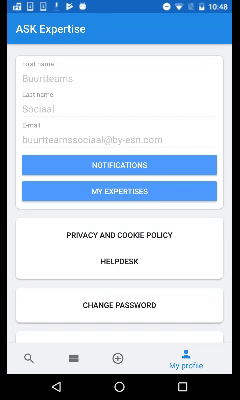The TextInputLayout contains an EditText which in turn receives the input from the user. With TextInputLayout introduced with the Android Design Support Library we're supposed to set the error to the TextInputLayout holding the EditText rather than the EditText itself. When writing the UI will be focused on only the EditText and not the whole TextInputLayout which can lead to the keyboard covering the error. In the following GIF notice that the user has to remove the keyboard first to see the error message. This in combination with setting IME actions to move on using the keyboard leads to really confusing results.
Layout xml code:
<android.support.design.widget.TextInputLayout
android:id="@+id/uid_text_input_layout"
android:layout_width="match_parent"
android:layout_height="wrap_content"
app:errorEnabled="true"
android:layout_marginTop="8dp">
<EditText
android:id="@+id/uid_edit_text"
android:layout_width="match_parent"
android:layout_height="wrap_content"
android:singleLine="true"
android:hint="Cardnumber"
android:imeOptions="actionDone"/>
</android.support.design.widget.TextInputLayout>
Java code setting the error to the TextInputLayout:
uidTextInputLayout.setError("Incorrect cardnumber");
How can I make sure the error message is visible without the user acting to see it? Is it possible to move the focus?



This is actually a known issue at Google.
https://issuetracker.google.com/issues/37051832
Their proposed solution is to create a custom TextInputEditText class